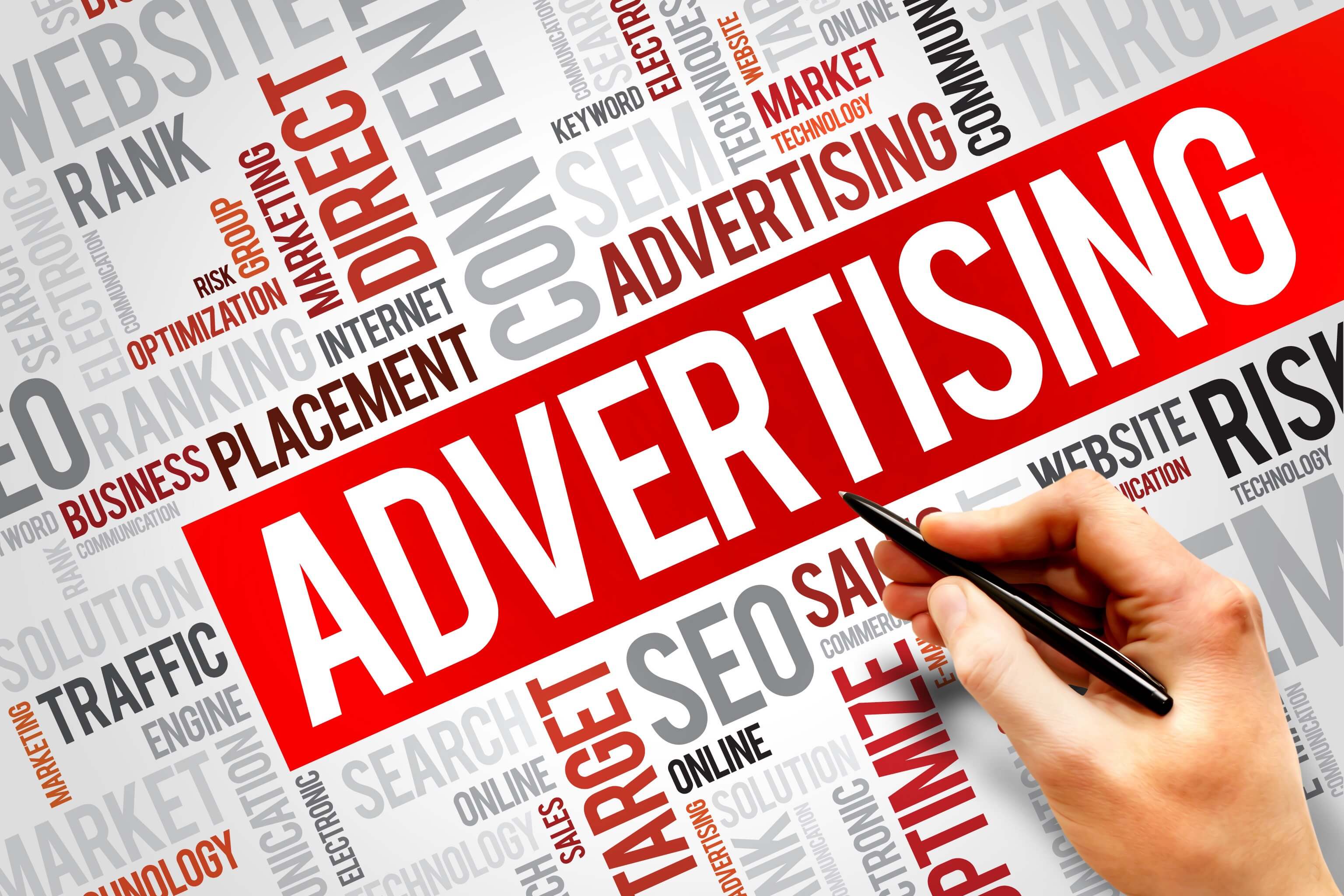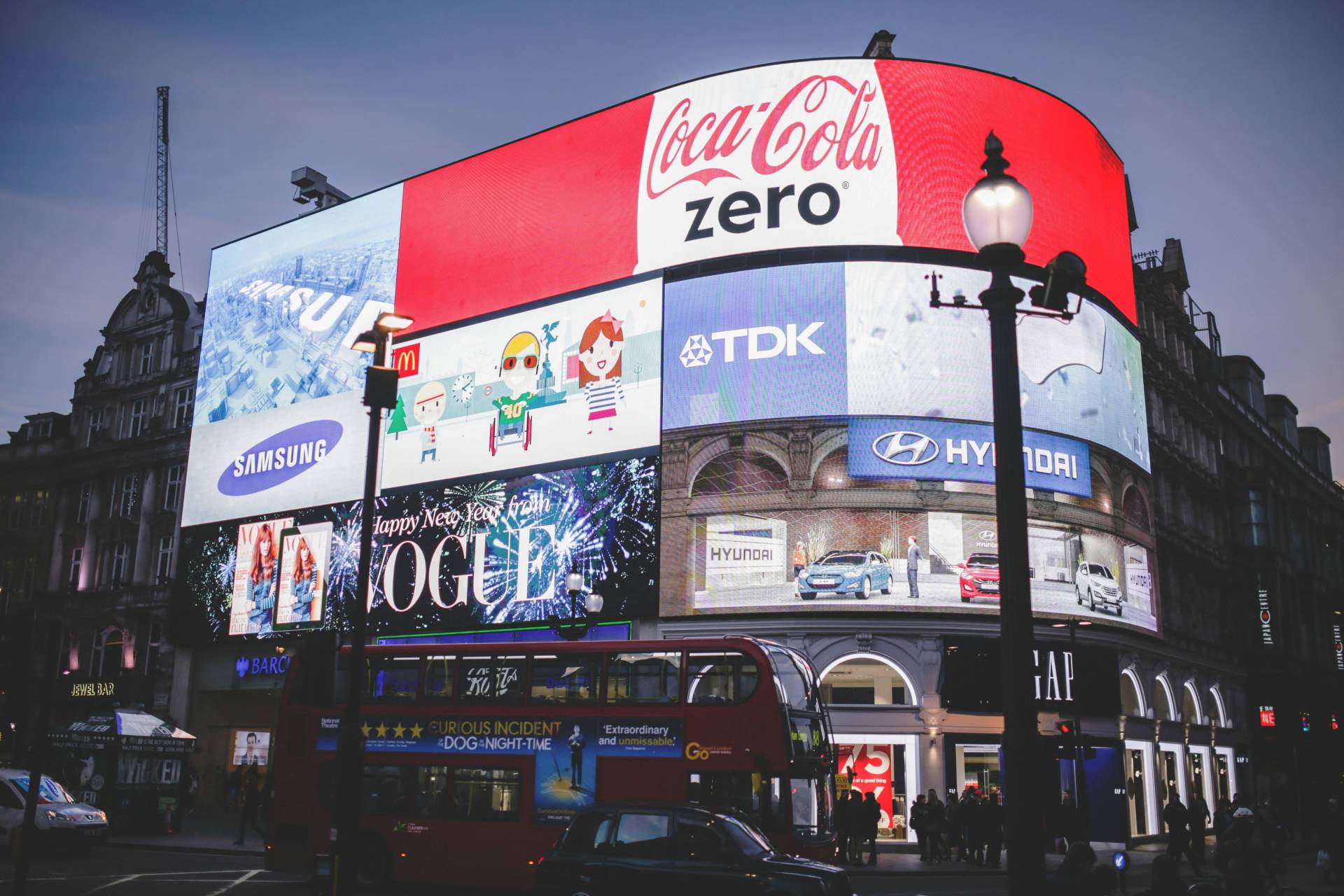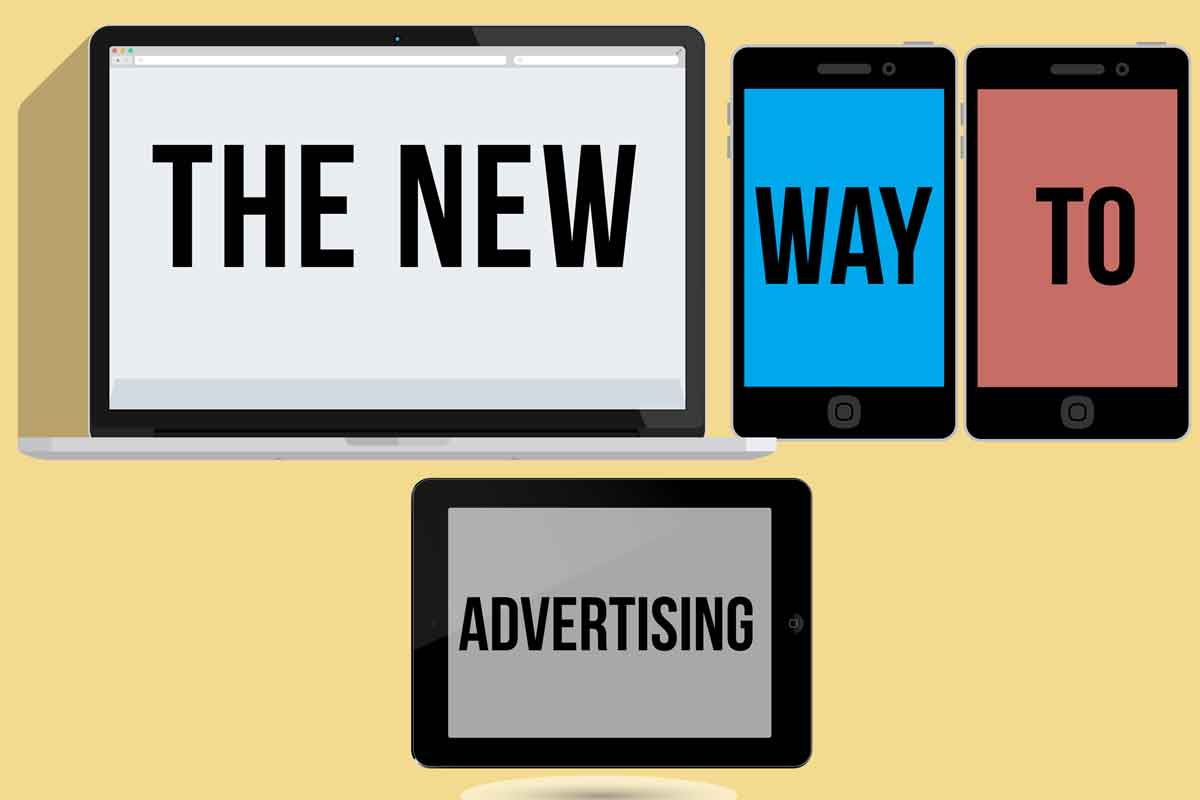Modern Advertising - Navigating The Digital Frontier
Explore the dynamic realm of modern advertising, from digital strategies and social media engagement to personalized campaigns and ethical considerations.
Author:Paolo ReynaReviewer:James PierceDec 14, 20237.6K Shares119.8K Views

Modern advertisinghas undergone significant transformations in recent years, adapting to the ever-evolving landscape of technology, consumer behavior, and cultural trends. The term "modern advertising" encompasses a wide range of strategies and channels that brands leverage to connect with their target audiences.
Since traditional media like print and television have evolved, the advertising environment has changed quickly. In 1941, a wobbly 10-second image served as the first television commercial to air in the United States.
In the vast and quickly evolving world of digital and social media today, where over 6 billion people have smartphones, advertising content is continuously sent to their palms through a variety of channels.
Many of the most popular consumer-reaching platforms, like Instagram Stories and TikTok, have just been around for a few years, and the volume of content marketing that is expected to be produced each year is increasing.
As technology disrupts consumer behaviors and alters where and how marketers contact consumers, the advertising sector is undergoing significant shifts. The privacy policies of Apple and Google are jeopardizing established ad targeting techniques. New sellers of advertisements are emerging as a result of the popularity of online buying and streaming TV.
These developments have sparked a wave of mergers and investment in ad tech businesses, as well as the emergence of new agencies that focus on digital advertising.
Advertisers and their agencies are taking advantage of the opportunity to reach consumers while they interact in virtual environments due to the excitement around the metaverse.
In order to propel expansion in the era of digital technology, marketing must update a particular set of skills and perspectives.
To you, what does the term "modern marketing" mean? Most of us can recall a clever digital campaign, a cutting-edge app, or some creative piece that was inspired and disseminated across various platforms.
Although some of the characteristics of contemporary marketing are present in these examples, we believe that it goes much beyond that. The capacity to use all of a company's resources to give customers the best possible experience and spur growth is modern marketing.
According to a recent McKinsey survey, 83% of CEOs worldwide stated that they believe marketing to be a key driver of most or all of a business' growth strategy.
Fulfilling this commitment calls for an entirely new style of operation. Rewiring marketing departments to prioritize speed, teamwork, and client satisfaction is necessary.
It is more important to change the way the work is done than it is to alter what marketing does. This modification can unleash 5 to 15 percent additional growth and reduce 10 to 30 percent of marketing expenses based on successful situations we've seen.
This discussion will delve into key aspects of modern advertising, including digital marketing, social media, personalization, and the evolving role of creativity.
Digital Marketing
Digital marketing is a comprehensive strategy aimed at enhancing a brand's online presence and visibility. It encompasses a range of tactics that leverage digital channels to reach and engage with target audiences. Key components of digital marketing include Search Engine Optimization (SEO), Content Marketing, Pay-Per-Click (PPC) Advertising, Email Marketing, and more.
SEO is the backbone of digital marketing, focusing on optimizing a website to rank higher on search engine results pages (SERPs). By employing relevant keywords, creating high-quality content, and improving site structure, brands can increase visibility and attract organic traffic.
In the era of information, content is king. Content marketing involves creating and distributing valuable, relevant, and consistent content to attract and retain a clearly defined audience. Blog posts, articles, infographics, and videos contribute to building a brand's authority and trust.
PPC advertising allows brands to place ads on search engines and other platforms, paying a fee each time their ad is clicked. This method provides a targeted approach, ensuring that ads are displayed to users actively searching for specific products or services.
Email campaigns remain a powerful tool for nurturing leads and maintaining customer relationships. Personalized and targeted emails can deliver tailored messages, promotions, and product recommendations directly to the inbox of potential or existing customers.
Social Media
Social media has transformed the way brands connect with their audience, providing a dynamic and interactive platform for communication. With billions of users on platforms like Facebook, Instagram, Twitter, LinkedIn, and TikTok, social media has become an integral part of modern advertising strategies.
Social media platforms offer sophisticated targeting options, allowing brands to tailor their campaigns based on demographics, interests, and behaviors. This ensures that content reaches the most relevant audience, maximizing its impact.
Visual content is paramount in social media advertising. Platforms like Instagram and Pinterest thrive on visually appealing images and videos. Brands leverage the power of visuals to tell stories, showcase products, and create a strong brand identity.
Social media is a two-way street. Brands can actively engage with their audience through comments, direct messages, and interactive content. Real-time feedback provides valuable insights, helping brands understand their audience and adapt strategies accordingly.
Collaborating with influencers has become a popular strategy on social media. Influencers, with their dedicated followers, can amplify a brand's message and reach a wider audience. Authentic partnerships contribute to building trust and credibility.
Integration Of Digital Marketing And Social Media
The synergy between digital marketing and social media is evident in successful modern advertising campaigns. Brands often integrate these strategies to create a cohesive and impactful online presence.
Digital marketing efforts can be complemented by cross-platform promotion on social media. Sharing blog posts, videos, or promotions across different channels enhances visibility and engages a diverse audience.
Digital marketing strategies can include social media advertising, utilizing the detailed targeting options provided by platforms like Facebook and Instagram. Additionally, retargeting campaigns can be implemented to reach users who have interacted with a brand's website or social media profiles.
Both digital marketing and social media generate vast amounts of data. Analyzing this data provides valuable insights into consumer behavior, allowing brands to refine their strategies, personalize content, and improve overall campaign performance.
Personalization
Personalization in advertising involves the customization of content and messages to meet the specific needs and preferences of individual consumers. With the abundance of data and advanced analytics tools, brands can now gather insights into consumer behavior, enabling them to deliver targeted and relevant messages.
The foundation of personalization lies in data. Brands leverage data analytics and machine learning algorithms to understand consumer preferences, purchase history, and online behavior. This data-driven approach allows for the creation of personalized experiences across various touchpoints.
Email marketing, a traditional yet highly effective channel, benefits significantly from personalization. Brands can send targeted emails based on user behavior, segmenting their audience and delivering content that aligns with individual interests. From product recommendations to exclusive offers, personalized emails enhance engagement and conversion rates.
Websites can dynamically adjust content based on user behavior. Personalized landing pages, product recommendations, and tailored messaging contribute to a more individualized online experience. This not only captures the user's attention but also increases the likelihood of conversion.
Personalization extends to digital advertising through behavioral targeting. Advertisers can display tailored ads to users based on their past online activities, ensuring that the content aligns with their interests and preferences. This targeted approach enhances the relevance and effectiveness of advertising campaigns.
Creativity In Modern Advertising
While personalization enhances relevance, creativity is the soul of advertising, capturing attention and leaving a lasting impression on consumers. Creativity goes beyond aesthetics; it involves innovative thinking, storytelling, and the ability to connect with audiences on an emotional level.
Visual elements remain powerful in capturing attention. Compelling visuals, whether in the form of images or videos, can convey a brand's message effectively. However, true creativity goes beyond aesthetics; it involves weaving a narrative that resonates with the audience, evoking emotions and building a connection.
Modern advertising increasingly incorporates interactive and immersive experiences. Augmented Reality (AR) and Virtual Reality (VR) technologies enable brands to create engaging experiences that go beyond traditional advertising formats. Interactive ads, quizzes, and challenges involve the audience, making the advertising experience more memorable.
Creativity in modern advertising often involves pushing the boundaries of technology. Brands leverage emerging technologies such as AI, chatbots, and interactive content to engage audiences in new and exciting ways. Technological innovation not only captures attention but also positions the brand as forward-thinking and dynamic.
Creative campaigns often involve partnerships with influencers or the creation of branded content. Influencers, with their authenticity and dedicated following, can amplify a brand's message. Collaborative efforts result in content that feels genuine and relatable, fostering a sense of trust with the audience.
The Synergy Of Personalization And Creativity
The most successful modern advertising campaigns find a delicate balance between personalization and creativity. It's not just about delivering a personalized message; it's about delivering that message in a way that captivates, entertains, and resonates with the audience.
Personalized content ensures that the creative elements of a campaign are not just visually appealing but also relevant to the individual viewer. For example, a personalized video ad can showcase products based on the user's browsing history, combining creativity with tailored messaging.
Personalization, when done right, creates a sense of understanding and connection. Creative elements that evoke emotions, tell stories, or address specific pain points can be more impactful when personalized. This emotional connection strengthens the overall effectiveness of an advertising campaign.
The marriage of personalization and creativity is iterative. Data gathered from personalized campaigns can inform creative decisions for future initiatives. Analyzing what resonates with the audience on a personal level allows brands to refine their creative strategies continually.
Ethical Advertising
Ethical advertising involves aligning promotional practices with moral and social values. This goes beyond merely adhering to legal standards; it encompasses a commitment to fairness, honesty, and social responsibility in all aspects of advertising. Ethical considerations in advertising include truthfulness in messaging, respect for consumer privacy, and a dedication to upholding societal values.
The cornerstone of ethical advertising is truthfulness. Brands are expected to accurately represent their products or services, avoiding deceptive practices that could mislead consumers. Misleading claims, false testimonials, and exaggerated promises undermine trust and can have long-term consequences for a brand's reputation.
In the age of data-driven marketing, respecting consumer privacy is a paramount ethical consideration. Brands must be transparent about the data they collect, how it is used, and provide consumers with the option to control their privacy settings. Failure to uphold these standards can lead to breaches of trust and legal ramifications.
Ethical advertising extends to considering the broader societal impact of campaigns. Brands should be mindful of the potential social consequences of their messaging, avoiding content that perpetuates harmful stereotypes, discriminates, or negatively influences public perceptions.
Transparency In Advertising
Transparency in advertising involves openly communicating with consumers about various aspects of a brand's operations, from sourcing and manufacturing processes to corporate values and environmental impact. Transparent communication fosters trust and empowers consumers to make informed decisions.
Consumers are increasingly interested in understanding the origins of the products they purchase. Brands that provide clear information about product sourcing, manufacturing processes, and supply chain practices demonstrate a commitment to transparency. This transparency not only builds trust but also resonates with socially conscious consumers.
Many modern consumers expect brands to go beyond profit-making and actively engage in ethical business practices. Transparent communication about CSR initiatives, such as philanthropy, sustainability efforts, and community involvement, allows brands to showcase their commitment to making a positive impact on society.
Authenticity is a key component of transparency. Brands that communicate openly about their values, challenges, and successes build authentic connections with consumers. This authenticity extends to marketing campaigns, where genuine storytelling and relatable content resonate more strongly with audiences.
Transparent pricing and clear terms of service are crucial for establishing trust with consumers. Hidden fees, unclear terms, or misleading pricing structures erode confidence and can lead to customer dissatisfaction. Openly communicating about costs and terms contributes to a positive customer experience.
Modern Advertising - FAQs
What Role Does Social Media Play In Modern Advertising?
Social media is a crucial component of modern advertising, providing interactive platforms for brands to engage with their audience personally. It enables targeted campaigns, fosters community building, and allows for immediate feedback and sentiment analysis.
How Does Personalization Contribute To The Effectiveness Of Advertising
Personalization is vital in modern advertising as it involves tailoring messages to individual preferences. Utilizing data analytics and AI, brands can create highly targeted campaigns, enhancing the overall customer experience and building stronger connections with consumers.
In What Ways Does Creativity Play A Role In Modern Advertising Beyond Aesthetics?
Creativity in modern advertising goes beyond aesthetics and encompasses innovative storytelling, the use of technology such as AR and VR, and interactive experiences. Creative campaigns capture attention, evoke emotions, and differentiate brands in a crowded market.
How Do Brands Leverage Data Analytics In Advertising?
Brands leverage data analytics to gather insights into consumer behavior and preferences. This data-driven approach enables the creation of targeted and personalized campaigns, improving the relevance of advertising content to individual consumers.
What Role Does Video Content Play In Social Media Advertising?
Video content is highly effective in social media advertising, especially on platforms like YouTube and TikTok. Brands leverage short clips and longer-form narratives to engage audiences visually, contributing to the shareability and virality of their content.
Why Is Staying At The Forefront Of Advertising Trends Essential For Brands?
Staying at the forefront of advertising trends is essential for brands to adapt to technological advancements and evolving consumer expectations. It enables them to remain competitive, connect meaningfully with their audience, and make a lasting impact in the dynamic world of modern advertising.
Conclusion
Modern advertising is a multifaceted and dynamic field that continuously evolves to meet the demands of an ever-changing landscape. Digital marketing, social media engagement, personalization, creativity, and ethical considerations are all integral components that shape the way brands connect with their audience.
As technology continues to advance and consumer expectations evolve, staying at the forefront of these trends is essential for brands striving to make a meaningful impact in the world of modern advertising.

Paolo Reyna
Author

James Pierce
Reviewer
Latest Articles
Popular Articles

